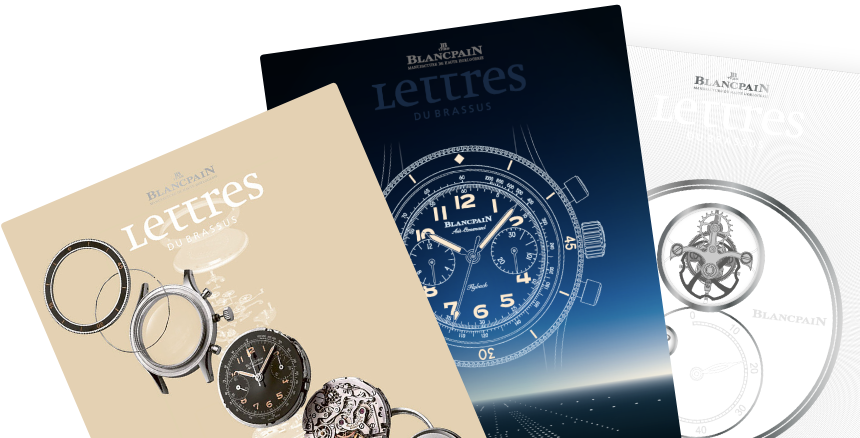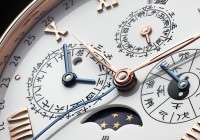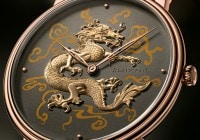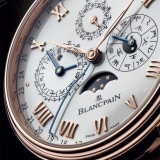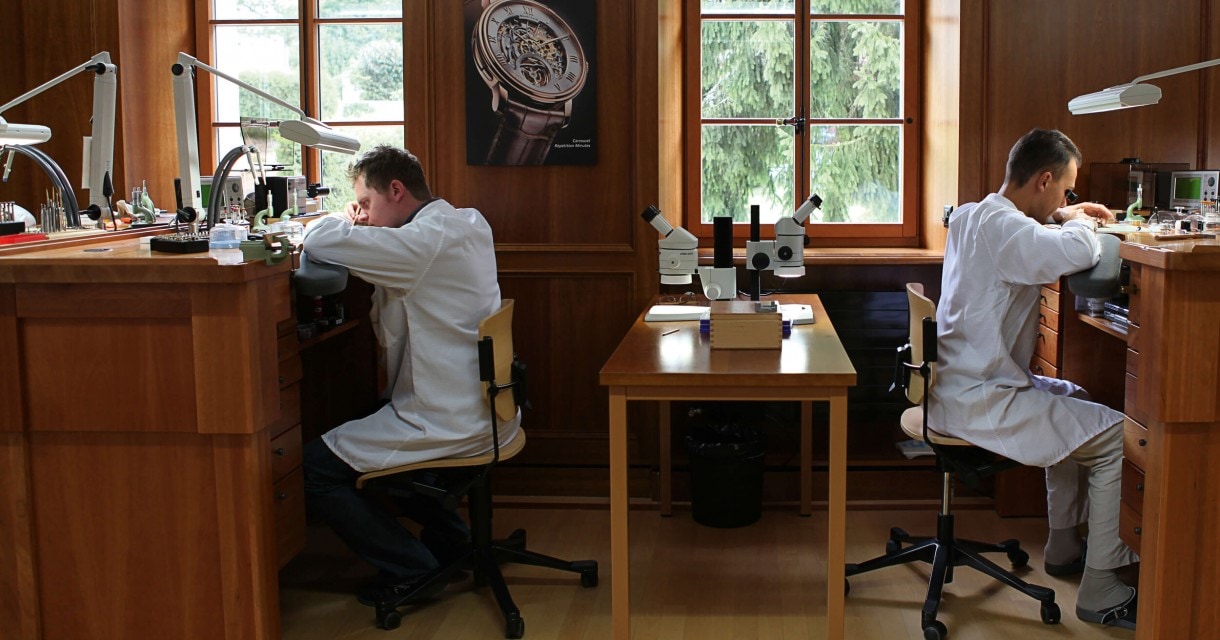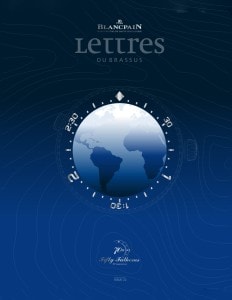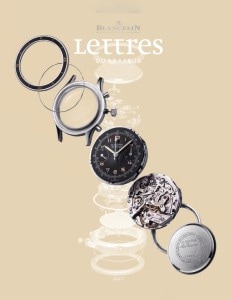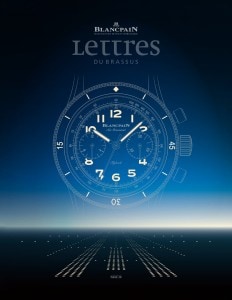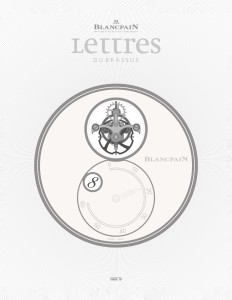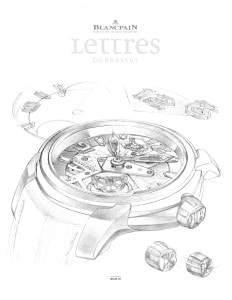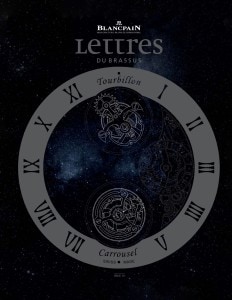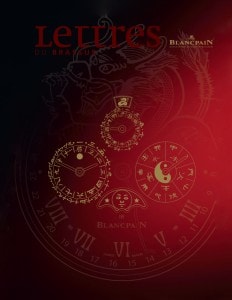
Search in Issues
Chapters
List of parts
Chapter 1
VILLERET CALENDRIER CHINOIS TRADITIONNEL
A world first: Chinese and Gregorian calendars combined in a single watch
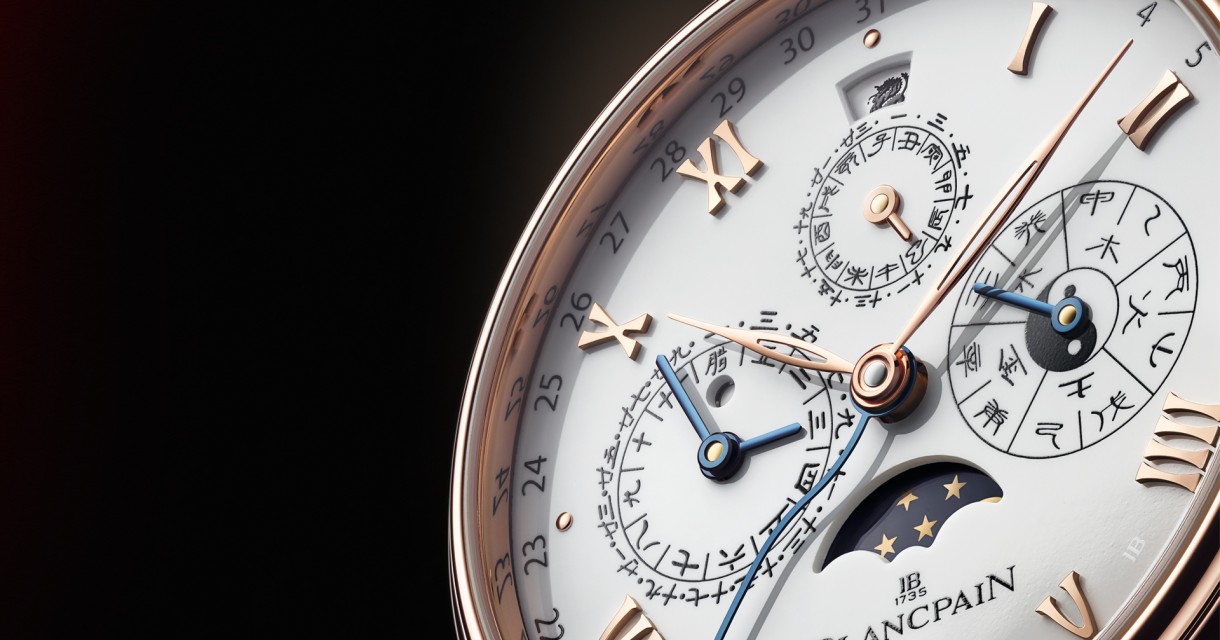
A calendar that keeps in synch with the seasons based on months, not days. Years sometimes with twelve months, other times thirteen, with insertion of leap months occurring irregularly. Months of 29 days, others of 30 days, again determined irregularly. Hours 120 minutes in length. A Gregorian calendar with customary date indications. A moon phase. How do you integrate all of this into a single wristwatch?
More than that. For all other watch complications, whether they be tourbillons, minute repeaters, or perpetual calendars, there are well worn paths from two centuries of watchmaking experience that guide movement designers on what to do and how to do it. Not for a combination Chinese/Gregorian calendar. This was to be a complication that had never been done before; there were no preexisting designs from which to draw. So the challenge facing Blancpain’s movement designers when they began the five year project to create the Villeret Calendrier Chinois Traditionnel was formidable. What they created occupies not only the unique position of the only production wristwatch in the industry combining a traditional Chinese calendar plus Gregorian calendar, it is the first production wristwatch in history to achieve this feat.
If you are a watch movement savant, you have already, no doubt, connected the dots to conclude that this must indeed be an exceedingly complicated movement. A few statistics emphatically make the point; no need for dot connection. The caliber 3638 comprises 469 individual parts. The calendar plate, which was developed from a white sheet of paper and from the ground up, alone, arrays six different levels of components! More than 20 fine linear springs are utilized in the calendar, each hand brushed and anglage finished with a file (lesser marques utilize a motorized tool).
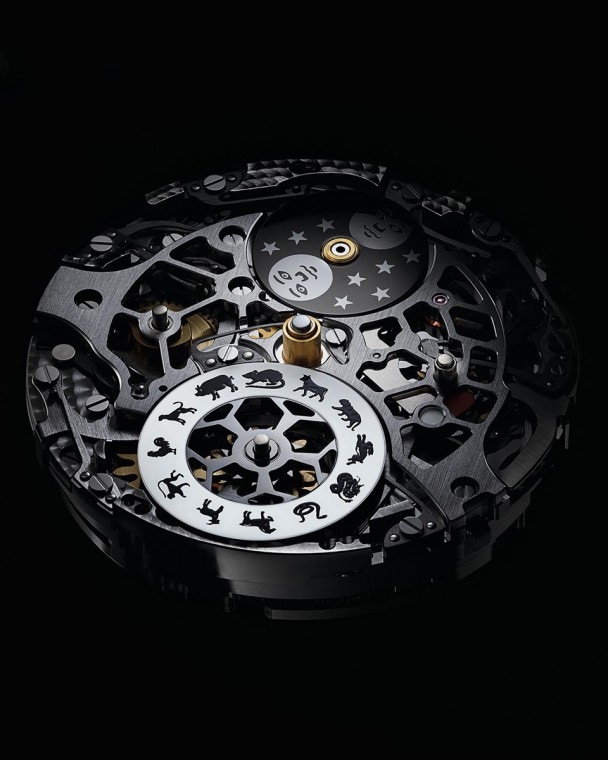
THE MYSTICISM OF THE CHINESE CALENDAR REVEALS ITSELF WITH A TOUR OF THE DIAL.
To put this all in perspective, the calendar far surpasses in complexity that of a perpetual. On the scale of complication, the Villeret Calendrier Chinois Traditionnel falls just short of a minute repeater! When a timepiece reaches this level of complexity not only are the most experienced master watchmakers called upon for its assembly, but, in addition, they are required, by hand, to make delicate adjustments to the individual components to bring the watch to full function. As follows from this, the Calendrier Chinois Traditionnel is assembled in Blancpain’s dedicated grand complication workshop in Le Brassus.
The mysticism of the Chinese calendar reveals itself with a tour of the dial. Logically our tour begins with the subdial located at the top of the dial in the 12 o’clock position. This presents the indication of the Chinese hours. A Chinese hour is 120 minutes in length and there are twelve. Thus, at a very simple level this would seem to be nothing more than a standard 24 hour display. That view, however, overlooks a vital distinction between a classic Gregorian 24 hour display and a Chinese version. The 120 minute hours do not change at 12- 2-4 etc. Instead the first hour of the day, the rat, begins at 23:00 and lasts until 00:59. That is followed by the ox which lasts from 01:00 until 02:59. Thereafter, by the tiger and so forth; all the hours bearing the name of an animal. The displays of the numerical hours and animal names are both arrayed around the subdial: numerals on the outside, animals on the inside.
Posed above the Chinese hour subdial is a window for the indication of the Chinese Zodiac. The Chinese Zodiac should not be confused with Western notions of the Zodiac. Although both are divided into a cycle of twelve parts, the Western Zodiac is tied to months; the Chinese linked to years. Moreover, the signs of Chinese Zodiac are completely composed of animals, while the Western Zodiac, although including some animals, also is composed of non-animal signs, such as constellations.
An ancient folk legend recounts the story of how the Chinese Zodiac animals were chosen and their ordering. According to the story, the Jade Emperor issued a decree summoning the animals to appear at 5 am at the gate of his palace. The order in which they appeared would determine the order of the years. Arriving at the palace necessitated fording a difficult stream. At the appointed hour, the rat and the cat determined that the fastest way to cross the stream would be on the back of the ox. Midway across, the rat pushed the cat into the water and, nearing the far shore, leaped off the back of the ox to arrive first. The ox following shortly thereafter secured the spot of the second year. By dint of his enormous strength which allowed him to fight the stream’s currents, the tiger arrived third. Cleverly hopping from stone to stone, the rabbit was the fourth to arrive, albeit nearly falling prey to calamity, as he washed into the stream only saving himself by finding a floating log that allowed him to reach the far shore. Surprisingly the flying dragon, who in principle, should have come in first, was the fifth at the gate. It seems that he was waylaid performing good deeds, including helping to blow the rabbit’s log to the shore. It was the horse next, but with a hidden passenger, the snake. Just before the finish line, the snake slithered off the horse, which frightened at the sight, reared up, allowing the snake to cross before him garnering the sixth place and lowering the horse to seventh. The next three, the goat, monkey and rooster worked as a team to surmount the challenge of the stream. The rooster spotted a raft, while the goat and monkey cleared the weeds to free it. Pleased by the cooperation the three had shown, the Emperor awarded the eighth year to the goat, ninth to the monkey and tenth to the rooster. It was the dog who arrived eleventh, far behind where his abilities should have placed him; his delay came because he decided to play along the way. Last was the pig, whose journey included a stop to eat and a nap thereafter. As for the cat, the Emperor declared the contest finished before its arrival. And so is the folk legend which fixes the twelve animal signs and their order for the Chinese Zodiac.
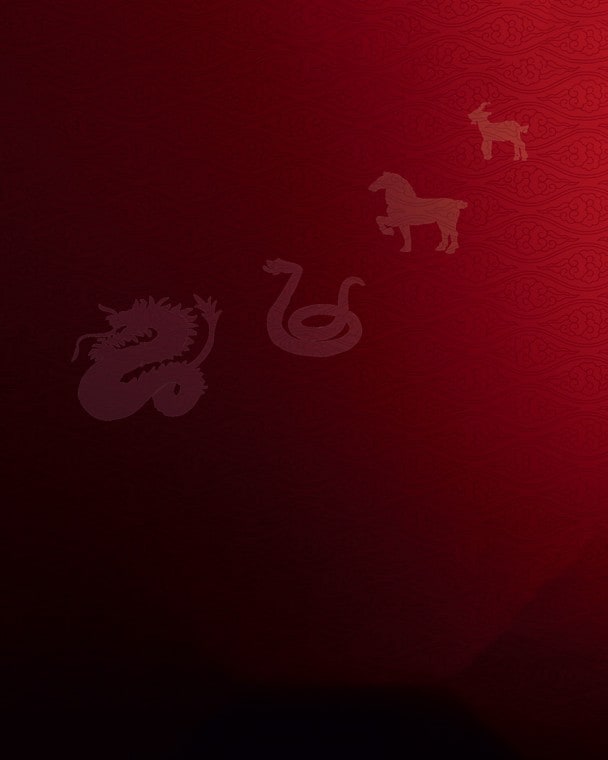
BLANCPAIN DEVISED A MECHANISM TO DISPLAY THE COMPLEX 60 YEAR CYCLE OF ZODIAC, ELEMENTS, AND YIN/YANG.
The Chinese Zodiac indication is intimately tied to the subdial located at 3 o’clock which contains the Elements and Yin/Yang indications. At the center of the subdial is the universal symbol of Yin/Yang. According to Taoist doctrine, Yin/Yang are fundamental concepts. They represent opposites that must be in harmonious balance. In the symbol, Yin is the area of white, Yang the area of black. Arrayed vertically, Yin is the sky and Yang the earth. The entirety of the circle represents the universe and the two “teardrops” intimately wound around each other symbolize that in nature opposites are bonded, intertwined and complement each other. The Yin and Yang, in turn, link to five separate Elements that, according to Chinese mythology, comprise the five basic building blocks of all beings in the universe: wood, fire, earth, metal and water. Each of these Elements has both a Yin and a Yang property. The scale showing the symbol of each of the Elements is on the inner diameter of the subdial just outside the Yin/Yang circle and the Yin and Yang properties for each are written on the outer diameter of subdial’s circle. The duration of each of the Elements in the calendar is two years; the first year Yang (which possess the positive polarity), the second Yin (negative polarity). Thus, the first year of wood (Yang) relates to dry wood; the second year (Yin) carries the notion of fresh wood. Similarly, the first year of fire (Yang) symbolizes a blazing fire while the second year (Yin) one which is extinguished. With five Elements and two years for each, the hand for the subdial turns once every ten years.
The yearly changing of the Chinese Zodiac indication shown in the window at 12 o’clock is linked to the Element/Ying/Yang display. The full cycle of the linked Zodiac/Element/ Yin/Yang spans 60 years. Set out on the chart at right is the most current part of the cycle. Reading the chart, 2013 is the Zodiac year of the snake, with the Element water/Yin. That will be followed in 2014 by the horse (remember the trick that the sent the snake across the line before the horse), with the Element wood/Yang and in 2015 by the goat, Element wood (two years for each element)/Yin. And so forth. The entire 60 year cycle can be directly read on the face of the Villeret Calendrier Chinois Traditionnel using the Zodiac window and the Element/Yin/Yang subdial.
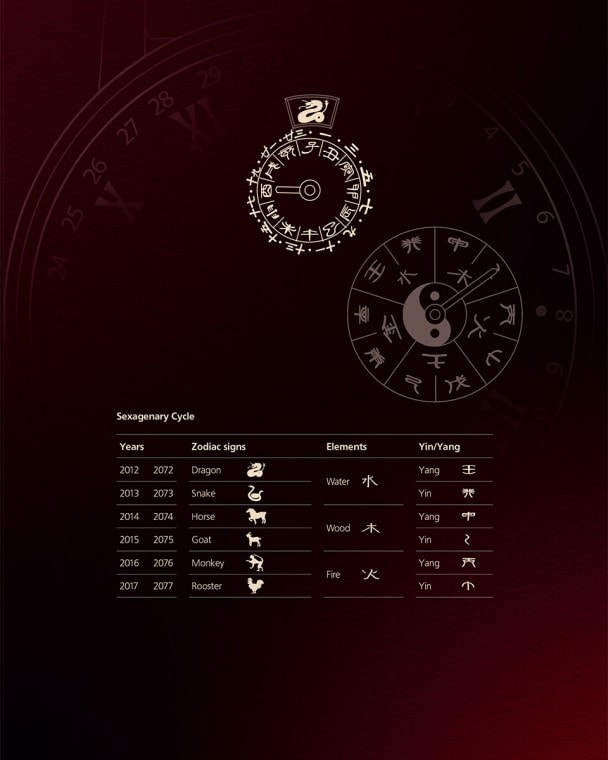
In order to construct a mechanism that could record a 60 year cycle presenting three different elements, Blancpain’s movement designers found a solution based upon a combination of gears. As the Zodiac cycle consists of twelve different signs, its principle component is a twelve tooth gear. In turn, each change of Zodiac gear is called upon to command a change of a ten tooth gear which carries the Element/Yin/Yang hand. A full revolution of the Zodiac gear will cause the ten tooth gear to turn two teeth past a full revolution. Since four more revolutions of the twelve tooth gear are needed to bring both the twelve tooth and the ten tooth gears back to the same position as at the start, a full 60 year cycle is implemented. Recall that for a traditional Gregorian perpetual calendar, the cycle is one of but four years. In the classic method of construction that four year cycle can be more easily implemented with but one gear that turns once every four years.
Equally daunting was the development of a method to set the watch on the cycle. A traditional corrector was deemed too cumbersome when perhaps as many as 59 corrections would be required to set the watch for the correct Zodiac/Element/Yin/Yang. Blancpain, thus, implemented the setting via the crown. The owner can easily spin the crown moving these indications forward rapidly to arrive at the right spot in the cycle.
Next on our tour of the Chinese calendar displays is the subdial at 9 o’clock bearing the Chinese date, month and leap month indications. The inner ring of the subdial is marked with the symbols for the Chinese months; the outer ring with the symbols for the days. In many ways, this subdial is the heart of the Chinese calendar. Scholars term the Chinese calendar system as “lunisolar”. An easy way to summarize the concept of a lunisolar calendar is to think of it as one that uses lunar months as the basic calendar unit. By contrast, the Gregorian calendar uses solar days as the basic unit. Both systems share common ground in their object, the accurate calculation of the tropical year. In the case of the Gregorian calendar this is the determination of the equinoxes (the two times of the year
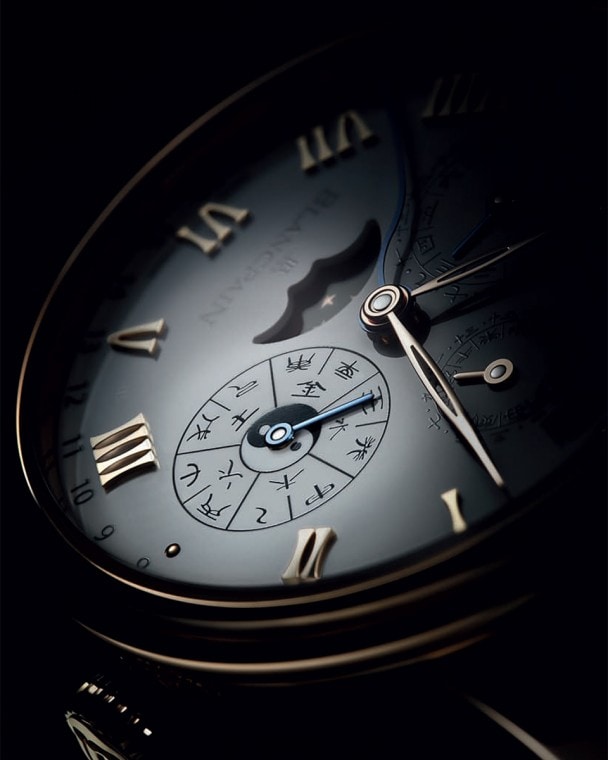
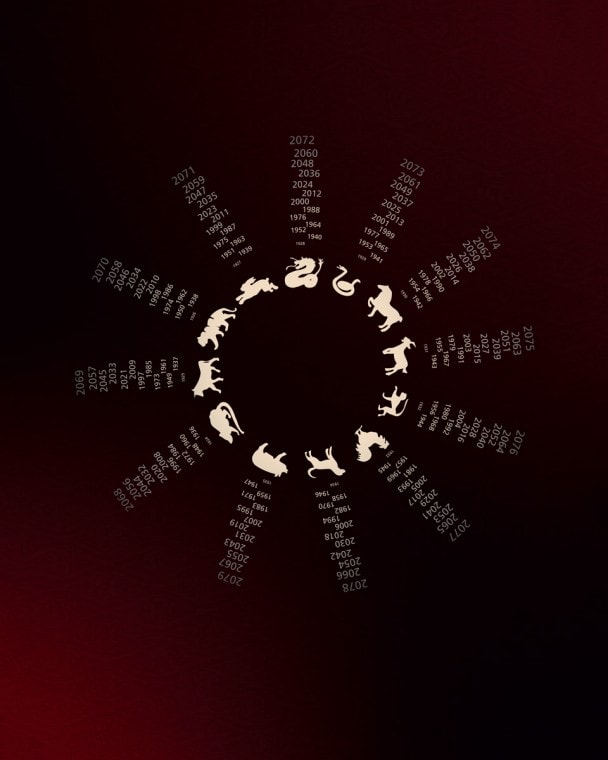
THE CHINESE CALENDAR IS “LUNISOLAR” WITH CORRECTIONS IN THE FORM OF LEAP MONTHS AND ADJUSTMENTS TO THE LENGTH OF MONTHS.
when day and night are of equal length). The Chinese calendar similarly focuses upon a solar phenomenon, the winter solstice. In both the case of Gregorian and Chinese calendars, there are errors which accumulate over time which must be corrected periodically. As each normal Gregorian year is approximately six hours shorter than the solar year (which, of course, determines when the equinoxes will occur), the actual date of the equinoxes moves approximately a quarter of a day later each year. The solution is the insertion of one day every four years (the six hour error multiplied by four), the leap year. In similar fashion, the Chinese calendar, based upon lunar months, is about 11 days too short if not corrected. As the Gregorian calendar adds one day each leap year, the Chinese calendar adds an occasional leap month to bring the calendar in line with the winter solstice. The Chinese calendar is vastly more complicated, however, in that not only is there a periodic addition of a leap month (which as we shall see can occur at any time of the year), but the length of the months themselves varies over time. Chinese months are termed “synodic” as they are meant to reflect the cycle of the moon. However, the mean synodic month is 29.53 days in length. In order to approximate that lunar cycle, the Chinese calendar is composed of months of 29 and 30 days, split approximately in half, that is to say in a given year there will be roughly an equal number of big months as little ones. Further complicating matters, the lengths of the months are not constant year to year. A given month may be short during some years and long on others following an irregular pattern. Nor is the spacing of long and short months evenly distributed. Since the length of the month is determined by a lunar cycle, it is possible, depending on the year, to have up to four long months in a row or three short months in sequence. Contrast this with the Gregorian system where except for February, the length of every month remains constant without regard to the year.
Thus, for the month display, Blancpain had to provide a means for correcting the 29 day months whenever they occur, that is to say, to advance the calendar to the next month after the 29th day. For this Blancpain has fitted the Villeret Calendrier Chinois Traditionnel with a corrector under the lugs dedicated to the Chinese date. Blancpain’s exclusive and patented under lug corrector system is ideally suited to an irregularly occurring calendar. This is because it can be actuated with a finger tip. Contrast the ease of finger tip correction with standard caseside correctors which require use of a tool (and which incidentally risks scratching the flanks of the case if the tool slips in the user’s hand). There is a second added bonus that comes with Blancpain’s under lug correctors, elegant refinement in the sides of the case, unmarred by the presence of corrector dimples. As the name suggests, the under lug correctors are neatly tucked out of sight under the lugs.
The second indication on the 9 o’clock subdial is that of the Chinese months. Here, too, account must be taken for an additional month which occurs irregularly in some years. According to the Chinese calendar system, the additional or “leap month” is added to the calendar by repeating a month. Leap months occur most often after the third, fourth, fifth, sixth or seventh month of the year. On the other side of the coin, only rarely is there is a leap month after the twelfth month of the year. Indeed, according to current calculations, the next time for there to be a leap month after the twelfth month of the year won’t roll around until 3358. Even that estimate is somewhat provisional in that calculations of leap months more than 100 years into the future are highly uncertain. There even occurs uncertainty in more current determinations so that scholars have concluded that an error was made in monthly calculations for the year 1651. To account for the occurrence of leap months two features were incorporated into the Villeret’s calendar mechanism.
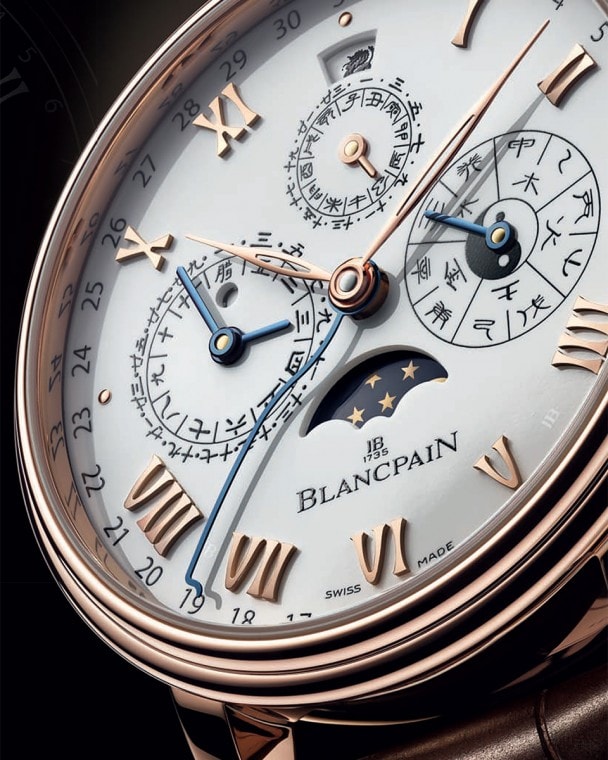

THIS VILLERET SPANS EAST-WEST OFFERING A GREGORIAN DATE AND MOON PHASE INDICATIONS.
First is a dedicated under lug corrector that will cause a month to repeat. However, merely providing a means to command a leap month is, in and of itself, insufficient. Blancpain had to devise a means to indicate on the dial that the displayed month is a leap month. For this, a small window is incorporated within the subdial at the 9 o’clock position. When a leap month occurs and the leap month corrector has been actuated, a red dot appears in the window. At the end of the leap month, when the calendar advances, the red dot disappears. Of course, there is a separate under lug corrector for the initial setting of the month or for resetting when the watch has run down.
There is one respect in which the irregularities of the Chinese calendar, when properly corrected, come together for one convenient annual automatic change. Provided that corrections during the course of the year have been made for the leap month and short/long months, the change of the last month of the year to the first month will occur under normal running of the watch on the day of the Chinese New Year. The calendar mechanism of the Villeret, will then automatically advance the Zodiac/Element/Yin/Yang displays for the New Year.
The Villeret Calendrier Chinois Traditionnel spans East-West with two traditional Western Calendar indications. The first is Gregorian date. In common with Blancpain’s other Villeret moon phase watches, the date is shown by a central hand which reads onto a 31 day scale. Two centuries-old watchmaking tradition is respected in using a serpentine form for the Gregorian date hand. This form was originally developed in order to distinguish the hand for a supplemental indication, such as a date, from the principal hour and minute hands. To further ease legibility the hand is fashioned in blued steel. The Gregorian date also has a dedicated corrector under the lugs.

THE BASE CALIBER INCORPORATES ALL OF BLANCPAIN’S RECENT MOVEMENT ADVANCES.
The second classic calendar display is that of the moon phase. It, as well, is set initially by an under lug corrector.
If you have been keeping track, counting the Chinese and Gregorian calendar elements set via under lug correctors, the tally at this point has reached five. As there are only four lugs, the fifth under lug corrector is neatly tucked away in the case back in the 9 o’clock position. There is one characteristics that all of these indications and their setting mechanisms have in common; they all can be actuated at any time of the day or night without risk of harming the complex calendar mechanism. Blancpain has been a pioneer in the design of secure movement mechanisms; that is to say movements that can be manually manipulated by the user without risk of damage. Particularly in the case of calendar mechanisms, the industry norm is to issue instructions to the user warning that there are times of the day when the calendar cannot be adjusted. These injunctions, usually set out in bold print in user manuals, are made necessary because, if an adjustment is made during the forbidden hours, the delicate gears within the movement that have become engaged to initiate a change in an indication are likely to be broken when forced by manual intervention. There are no such risks with Villeret Calendrier Chinois Traditionnel since each of the under lug correctors, when pushed, first disconnects the portion of the movement which would be engaged to advance the indication automatically with the running of the watch removing the possibility that the manual change will conflict with an automatic advance. In this fashion the intricate calendar mechanism is fully secured and protected.
TO FACILITATE CORRECTIONS IN THE TWO CALENDARS, BLANCPAIN HAS INCORPORATED FIVE OF ITS PATENTED UNDER LUG CORRECTORS.
There is one final touch which Blancpain has brought to aid in the setting of the calendar: an iPad/iPhone application which daily shows the correct indications eliminating the need to search and consult other sources.
The base caliber of the Villeret Calendrier Chinois Traditionnel incorporates all of Blancpain’s recent movement advances: three main spring barrels connected in series, a free sprung titanium balance wheel with gold inertial regulating screws. Together these achieve a full seven day power reserve.
The Villeret Calendrier Chinois Traditionnel is offered in two metals, red gold and platinum. Both versions feature fully fired enamel dials, unique in that they include applied indexes. The platinum versions will be issued in limited series of 20 pieces per year, each marked with the Chinese Zodiac sign for the year in which the watch was produced. The red gold versions are unlimited.
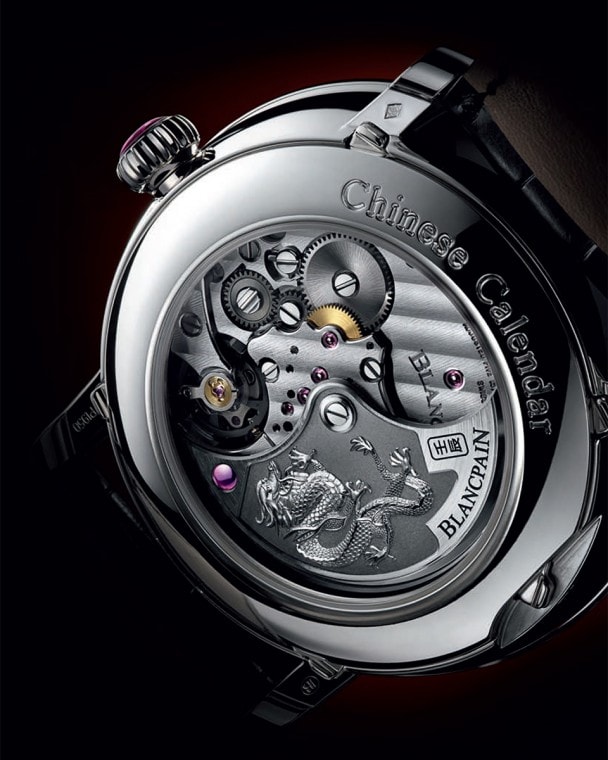
Other issues
Don't miss the latest issue
Sign Up for New Releases